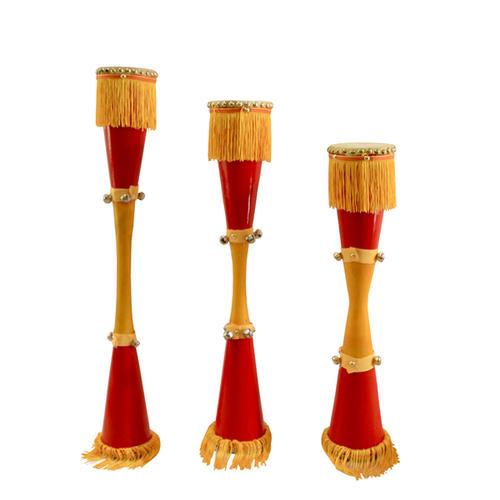The history of the long drum
527 views · Organized by 赵锦辛 on 2022-03-10
With a long history, the long drum originated from the ancient slender-waisted drum. From the aspects of its shape and characteristics, popular regions and usage occasions, it has many similarities with the yellow mud drum. Its drum shape is similar to that of the public yellow mud drum. Therefore, when historical records and documents of the past dynasties recorded such drums used by the Yao people, they were also called waist drums, long waist drums, long hous, and long drums.
As early as the Song Dynasty in the 12th century, the Yao people were able to make long drums. But they don't give each other away, they don't sell, and they all have them in Zhaizhai. In the Southern Song Dynasty Fan Chengda's "Guihai Yuheng Zhi": "Nao drum, Yao people play music, like a waist drum, the cavity is twice as long, the upper is sharp and the lower is extravagant, and it is also planted on the ground with a leather scorpion, sitting on it." It is also an ancient slender waist drum. Variation of musical instruments. Popular in Guangxi, Guangdong and other Yao inhabited areas. Mainly used for dance accompaniment.

As early as the Song Dynasty in the 12th century, the Yao people were able to make long drums. But they don't give each other away, they don't sell, and they all have them in Zhaizhai. In the Southern Song Dynasty Fan Chengda's "Guihai Yuheng Zhi": "Nao drum, Yao people play music, like a waist drum, the cavity is twice as long, the upper is sharp and the lower is extravagant, and it is also planted on the ground with a leather scorpion, sitting on it." It is also an ancient slender waist drum. Variation of musical instruments. Popular in Guangxi, Guangdong and other Yao inhabited areas. Mainly used for dance accompaniment.
Involving musical instruments
There are three common types of long drums (pinyin: cháng gǔ), one is the Korean long drum, the other is the Yao nationality long drum, and the other is the Fuzhou wolf string. The Korean long drum is mainly popular in Yanbian Korean Autonomous Prefecture of Jilin Province and other areas inhabited by Koreans, also known as Fugu. The Yao nationality long drum has been circulated in the Song Dynasty. It is mostly made of Yanzhi wood with fine craftsmanship. It is mainly used for dance accompaniment. Fuzhou wolf string, also known as Fuzhou long drum, is a traditional Fujian folk percussion instrument, which is mostly used in Fujian folk music.
Guess you like
Organized by Fucui on 2022-03-10
At the foot of Dayao Mountain in Guangxi, in northern Guangdong and southwestern Hunan, there are industrious and intelligent Yao people. Since ancient times, the Yao people have created a variety of cultural arts.
read >>
Organized by 尘夕 on 2022-02-14
The most common long drums are Korean long drums, Fuzhou wolf strings, and Yao nationality long drums.
read >>
 渝公网安备 50010702504639号
渝公网安备 50010702504639号